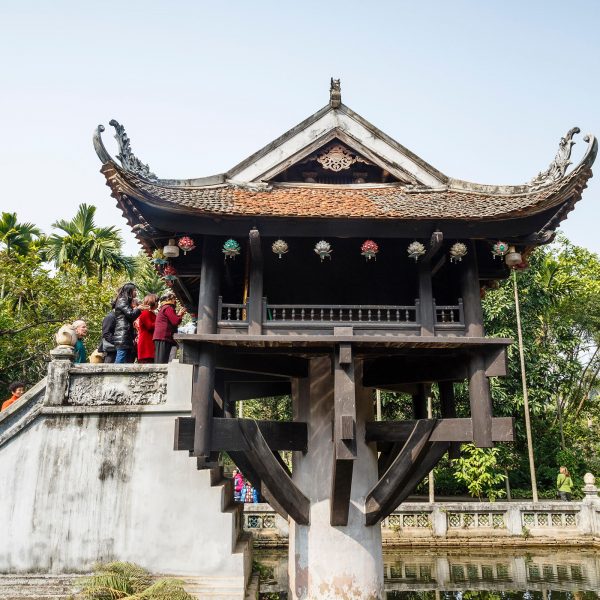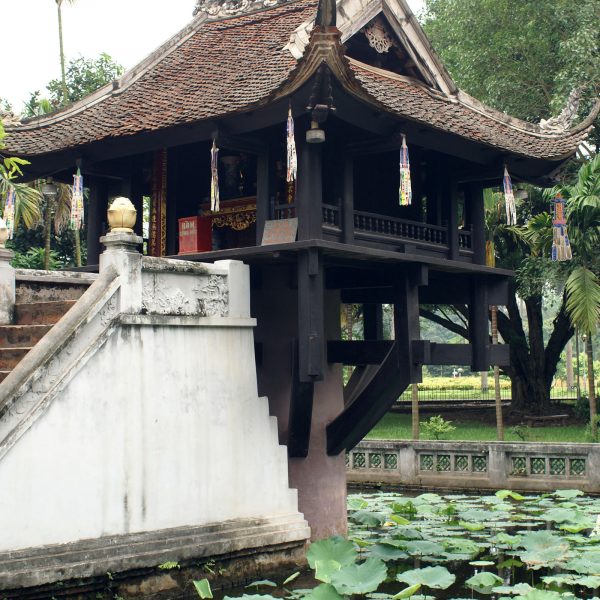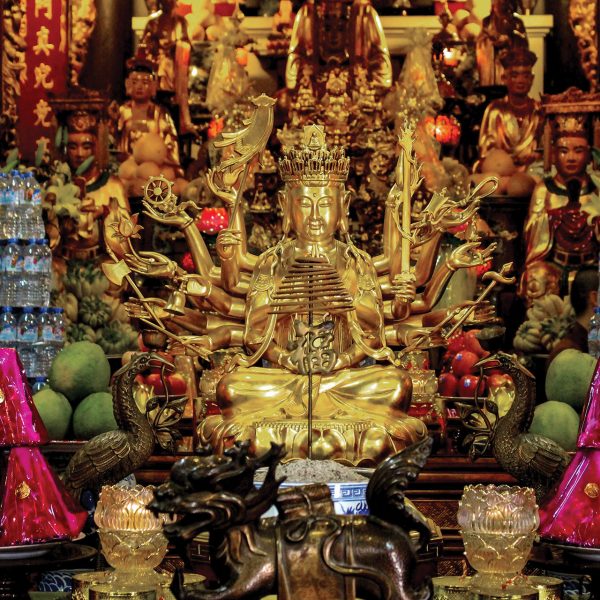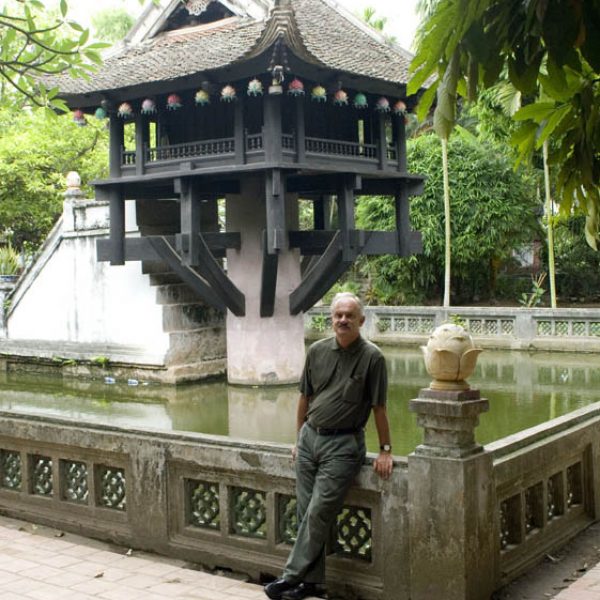Volume 1, Issue 2, May-June 2020.
Chua Mot Cot
The One Pillar Pagoda
Chua Mot Cot, the One Pillar Pagoda, is an historic Buddhist temple in Hanoi, the capital of the Socialist Republic of Vietnam. The temple was built by Emperor Ly Thai Tong, who ruled from 1028 to 1054. According to court records, Ly Thai Tong was childless and dreamt that he met the bodhisattva Avalokiteshvara, who handed him a baby son while seated on a lotus flower. Ly Thai Tong then married a peasant girl that he had met and she bore him a son. The emperor constructed the temple in gratitude for this in 1049,*1 having been told by a monk named Thien Tue to build the temple by erecting a pillar in the middle of a lotus pond that resembled the one he had seen in his dream. *2
The temple was located in what was then the Ta Cam Garden in Thach Bao, in the Vinh Thuan district of the capital, Thang Long (now known as Hanoi). Before the pagoda was opened, prayers were held for the longevity of the monarch.*3 Each year during the Ly Dynasty era, the temple was the site of a royal ceremony on the occasion of Vesak, the birthday of Gautam Buddha, at which the emperor held a Buddha-bathing ceremony that attracted monks and laymen alike. The monarch would then free a bird, which would be followed by the people. *4 The temple was renovated in 1105 by Emperor Ly Nhan Tong, and a bell was cast. When installation was attempted in 1109, however, the bell, which was regarded as one of the four major capital works of Vietnam at the time, was much too large and heavy to be raised. Since it could not be tolled while left on the ground, it was moved into the countryside and deposited on farmland near Nhat Tru Temple. This land was widely inhabited by turtles, so the bell came to be known as Quy Dien chung, which means Bell of the Turtle Farmland. At the start of the 15th century, Vietnam was invaded and occupied by the Ming Dynasty. In 1426, the future Emperor Le Loi attacked and dispersed the Chinese forces, and while the Ming were in retreat and low on weapons, their commanding general ordered that the bell be melted down, so that the copper could be used for manufacturing weaponry. *5
The temple is built of wood on a single pillar 1.25 metres in diameter and 4 metres in height, and it is designed to resemble a lotus blossom, which is a Buddhist symbol of purity, because the lotus flower blooms in muddy ponds. In 1954, the French Union forces destroyed the pagoda before withdrawing from Vietnam after the first Indochina War.
Notes
(1) Ray Nick, Vietnam. Lonely Planet 2005.
(2) Vo Van Truong, Chua Mot Cot, Buddhism Today, 2008.
(3-5) Vo Van Truong, Chua Mot Cot, Buddhism Today, 2008.
It was rebuilt in 1960. The pagoda is a tiered tower with multiple eaves, built following traditions that originated in the building of stupas in ancient India, which were then further developed in East Asia drawing on the traditions common to China, Japan, Korea, Vietnam and other parts of the continent. Most pagodas were built for religious functions, most commonly Buddhist. In Vietnam and Cambodia, due to French translation, the English term ‘pagoda’ is a more generic term referring to a place of worship, although pagoda does not accurately describe a Buddhist vihara. The stupa from which the pagoda originates can be traced to the 3rd century BCE, a dome shaped structure used as a commemorative monument in association with storing sacred relics. In East Asia, the architecture of Chinese towers and Chinese pavilions blended into pagoda architecture, eventually also spreading to Southeast Asia. The pagoda’s original purpose was to house relics and sacred writings. (Wikipedia)




